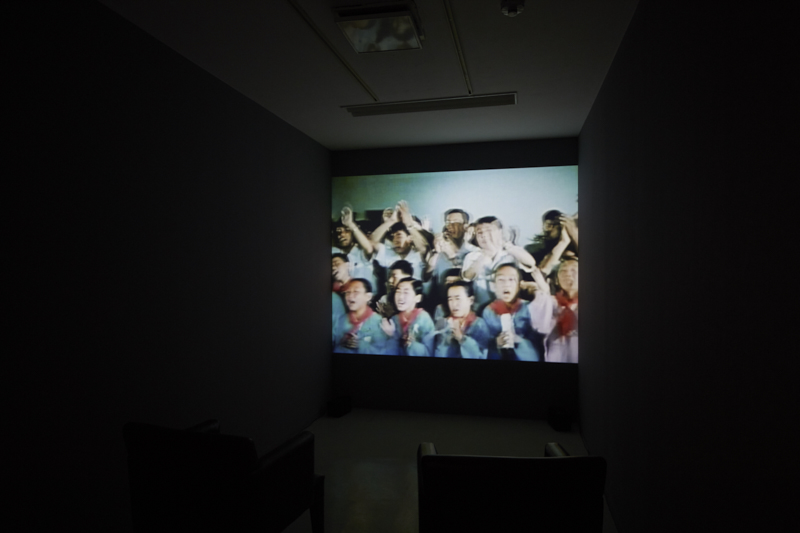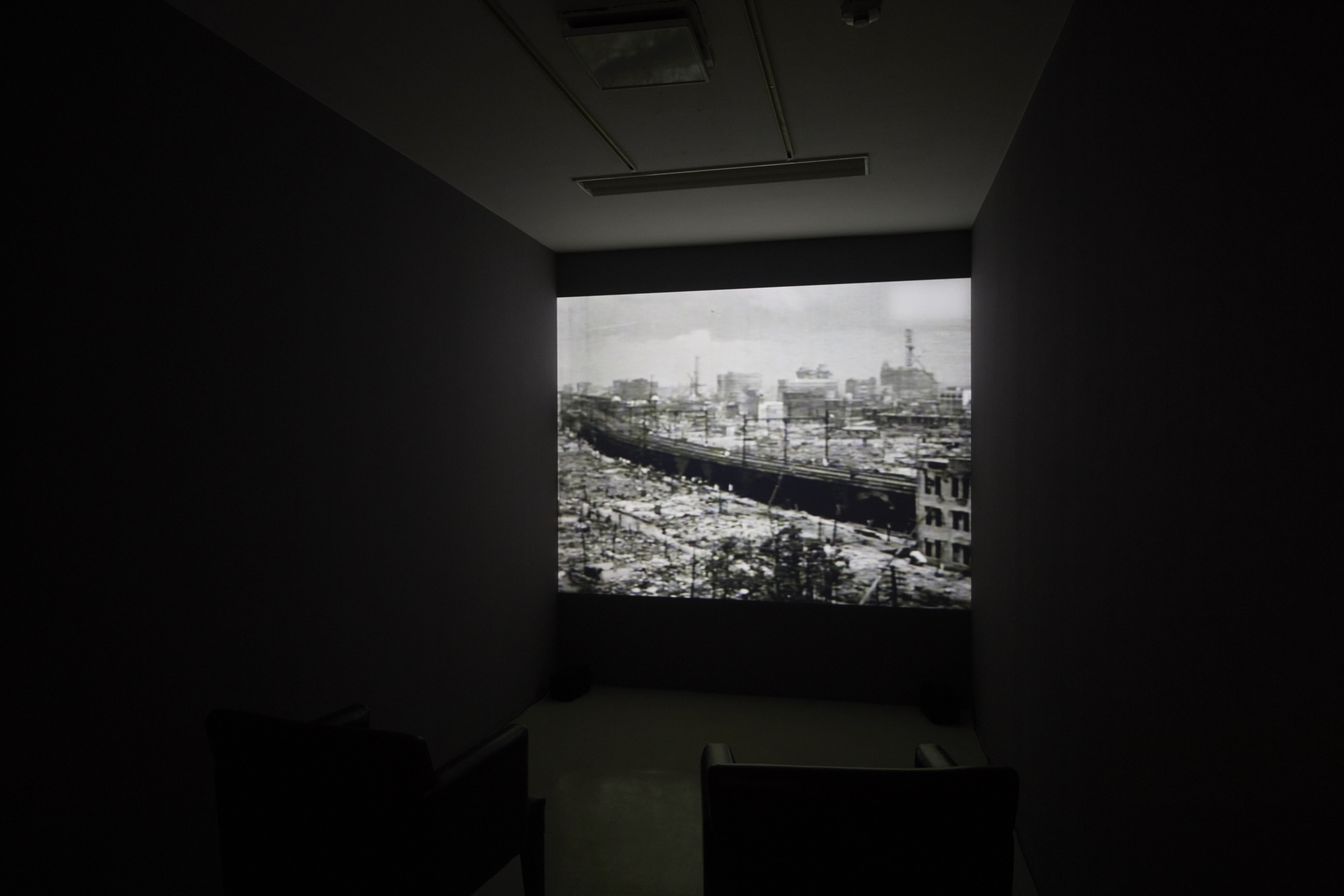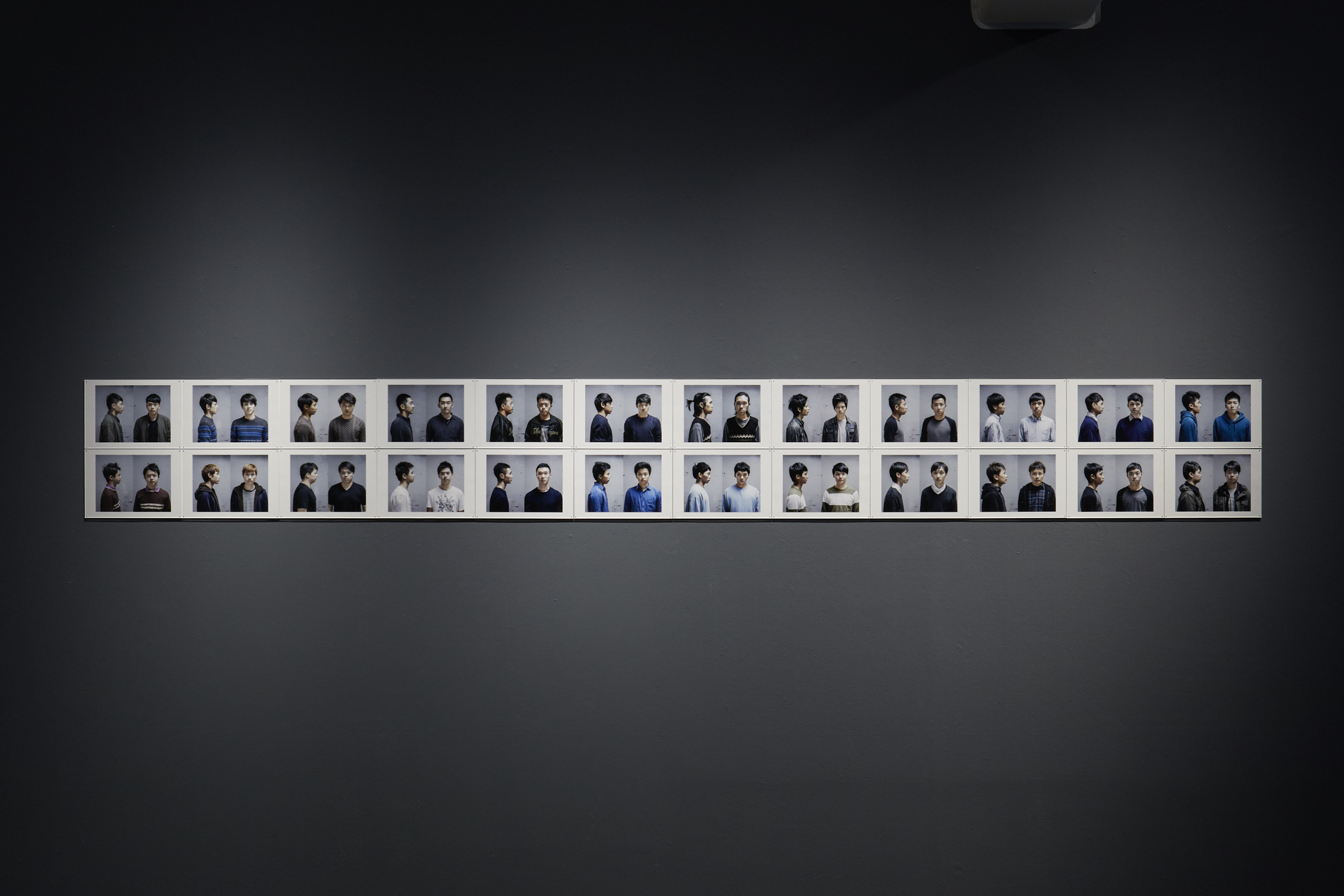Browse

1
“Asia” has a multiplicity of perspectives distributed in its many corners and these perspectives continuously interact with one another over time. If one such corner represents the western- centric historical narrative that renders East Asia marginal, another corner must represent marginalized perspectives found in an order internal to Asia. These marginalized perspectives exist on the peripheral not because of geography. Rather, under imperialism and the revival of nationalism, this peripheral space is continuously shaped by the shifting relations between the oppressed and the oppressors with regards to “Asia Values”, culture, politics, and conditions of life. Consequently, “Asia” attains a political meaning, and it morphs into predetermined political imaginaries. A re-evaluation of “Asia” as a conceptual conduit can be achieved through art exhibitions, discourse- building, and inter-regional dialogue. How can we locate the varied approaches to collective action among different countries — in the in-between of different histories, experiences of Cold War, and individual and collective perceptions? Equally complex and shifting as the imaginaries of Asia, curatorial practices continue to produce exhibitions that raise questions and dialogs. Their close-knit collaborative model attempts to echo the ever- shifting and inter-connected discursive practices among countries in Asia. Moreover, this model reflects a re-thinking of a collective community, reminiscent of an earlier moment. The concept of “inter-connection” in Asia only began to deteriorate after 1880s, following the growth and expansion of Japanese Imperialism. Back then, there was an Asia-centric thinking fueled by the idea of unity, an anti-imperialism discourse, and anti-Western sentiments. A concept of Asia proposed around 1895 conjured up the role of a “liberator” among surrounding regions, seeing itself as a center and through which a new order can be reconstructed.
Neo-colonialism of the 1960s is a new critique concerned with that despite independence, emerging nations were still dominated by the same colonial power structure. This signaled a conceptual shift, a new kind of colonization under globalization. Japanese scholar NISHIKAWA Nagao (西川長夫) experienced Japanese colonialism in wartime Korea and Manchuria as a child. After Japan lost the war, it took him and his family a full year to get out of North Korea, crossing 38th parallel north and returning as repatriates. Informed by this experience, Nishikawa holds unique insights into the condition of the postwar Japan and proposes the concept of “colonialism without colonies”. He maintains that, under globalization, thinking of colonialism
only in terms of territorial expansion and occupation results in a concealment of colonial power dynamics. The concept of “internal colonialism” developed out of the various territories of Imperial Japan. According to NISHIKAWA Nagao, the notions of capital, nationhood, and civilization are all essential to modernity and simultaneously inseparable from colonialism – they form part of the impetus for colonialism. He thinks that “global cities” and “internal colonialism” produce sites that exhibit colonialism conceived in this new way.
The “neo-” in neo-colonialism points to an attempt to impeach what is concealed under classic colonialism based on the dichotomy between civilization and barbarism; it further lays out a critique of modernity. Given that Asia as a concept is easily muddled, when using contemporary art as a mode of inquiry, we must first ask: whose Asia is it that we are delineating, articulating, and theorizing? Who do these Asia imaginaries and sentiments belong to? How do we not get caught up in a hypostatized East Asia that is only ever imagined? Could artistic practice delineate an axis of resistance that repels contamination by ideologies of East Asia formed by a power dynamic configured with violence? In re-evaluating different histories past and present, perhaps we can discover a new anchor or an ethos that would allow for a structural overhaul–yielding a history that goes beyond the dynamics of country to country discourse. This anchor would signify a problematic that is continuously churning, and it would produce ideas that come from the margins, from the peripheral. What would be this “peripheral perspective”? When Foucault discusses alternative discourse, he points out the so-called “outside” (dehors) is deployed by alienation and confinement. In other words, constructing an “outside” requires an Other that is excluded by a homogenous community. This essay raises ways to think about the spatial and the political in postwar Japan, based on the body and geography, addressing spatial politics, memory, migration, and spaces of memory, as well as the resulting urban space imagined and remembered.
2
In Japan, the term “postwar” (戦後, Sengo) does not entirely refer to a historical era. Rather, it has to do with an affect formed around the 1945 surrender and the Cold War geopolitics. Moreover, it evokes a system established in the context of postwar legality, a self-reconstruction formed out of the memory of the war and the legacy of the empire in a temporal ruin. In a 1955 essay, architect TANGE Kenzo (丹下健三) writes: “without the concept of space, it is impossible for an architect to handle the essence of function”. The concept of space lies at the heart of design methodology in Tange’s studio, in pursuit of function of space co-existing at any cost. In 1960, at the World Design Conference in Tokyo, the Metabolists boldly proposed the concept of new urbanism in the book “Metabolism/1960”, emphasizing the idea of future cities. In the very next year, they published “A Plan for Tokyo – 1960”, a city plan proposal for an orderly city on the water that extends out from Tokyo Bay. The proposal is an exploration in uniting urban space, transportation, and architecture into one organic system, creating a new urban order. That postwar moment marks the beginning of a school of thought and lineage in architecture and planning in Japan that continues to this day. What followed were KUROKAWA Kisho’s (黒川紀章) “Tokyo Project: Helix City Project”, ISOZAKI Arata’s (磯崎新) “Shibuya Project: City in the Air”, and KIKUTAKE Kiyonori’s (菊竹清訓) “Marine City”. The Metabolists delivered to the world their manifesto with these grand and imaginative urban planning proposals, asserting that the betterment of human society is possible through seeing architecture and the city as a live organism. For the Metabolists, architecture is a synthesis of plant life and industrial body, something that can grow and be substituted continuously, extending outwards from a core.
According to Tange, space signals the notion of renewal – with continuous reconstruction, regrowth, and movement. The Metabolists were commissioned by the Japanese government to develop multiple urban planning projects during the postwar reconstruction period. As demonstrated in the Greater East Asia Co-Prosperity Sphere commemorative building conceived by Tange in 1942 before the war ended, the experience of war afforded these architects the opportunity to explore new building possibilities in the vast colonized lands. They exercised their imagination for city planning in the colonized Manchuria, Inner Mongolia, and Shanghai. Ultimately, urban development is greatly affected by the overall development policy on the level of the nation, reflecting the economic and societal conditions at the time. To have control over space is a testament to power acquired through political and economic competitions regionally. The Osaka Expo in 1970 served as a critical event to be executed for the Metabolists. It also displayed to the world a commitment to peace and the evolution of life. The center of the fair was a festival plaza covered by a frame designed by Tange. Extruding out of an opening at the center of the frame was “Tower of Sun” by artist OKAMOTO Taro ( 岡本太郎 ). The design of interior exhibition spaces, led by KAWAZOE Noboru ( 川添登 ), followed the thematic “The Evolution of Life”. Above the frame in the festival plaza hung KUROKAWA Kisho’s houses for the future made from capsules and suspended in midair.
Another exposition took place in Osaka, in Meiji Year 36, the 5th National Industrial Exposition (勸業博覽會). There, I found the same ideological formation of a Japanese community with regards to Okinawa as in this one, Expo ’70.
— OE Kenzaburo ( 大江健三郎 )
In Meiji Year 36 (1904), Ryukyu Shobun (琉球処分)(註2) was more or less coming to an end, meaning that that land reform was complete in Okinawa. During the opening ceremony of Expo’70, OE Kenzaburo witnessed the adamant attitude of Japanese leaders towards the Okinawa problem. He thought that if the Japanese people were serious about rethinking the Okinawa problem – revisiting the question “what is a nation” – it would have been during the 70s. It would also be the time to own up the burdens and sacrifices Okinawa has endured since Ryukyu Shobun. And it would be a time to finally tackle a shared vision of the future through newly developed imaginaries. After all, this was a moment when a new awareness and ideology was being clearly excavated among the Japanese public and when international capitals were pouring in again after the war. This moment ushered in a new beginning on spatial politics and commemorative practices in postwar Japan, as space and memories are reproduced and revised under mechanism of postwar nationalism.
3
Everyone knows it
But it is not on the map
Because it is not on the map
It is not Japan— KIM Shijon (金時鐘, 김시종 )
In his selected poems titled “Igaino Shishu” (猪飼野詩集), Japan- born Korean poet KIM Shijon uses the term “outside of the map” to denote the area where Korean laborers who migrated to Osaka during the war reside. This area received another wave of migration around 1948 because of the Jeju uprising (제주 4·3 사건). In his work, Kim expresses sadness over the fact that the names of these places are only passed on orally and never recorded officially, describing the lives of migrants who try to make a life in a foreign land with stories of exiles who lose their cultural and political agencies under imperial and colonial powers.
The renewals of urban landscape in the1970s concealed not only areas occupied by migrants “residing in Japan” since before the war. The other concealed spaces involve Japanese day laborers whose population fluctuates based on the amount of new developments. These gathering areas emerge in urban centers out of convenience, such as Sanya (山谷) district in Tokyo, Kotobukicho (寿町) in Yokohama’s, and Kamagasaki (釜ヶ崎) in Osaka. The media stigmatizes these areas occupied by nameless day laborers migrated from rural regions as zones of lawlessness, emphasizing its violence and dirtiness, re-enforcing their spatial separation from the rest of the urban landscape. These spaces of migration create a point of discrepancy in discussing post-colonial displacement. For the Koreans residing in Japan (or, Japan-born Koreans), these spaces cannot be home because they were already occupied by another group of migrants. For the precarious day laborers, their housing conditions of individual capsule-like units, as determined by the efficient management of labor, predate KUROKAWA Kisho’s capsule houses, echoing Giorgio Agamben’s words: “Today it is not the city but rather the camp that is the fundamental biopolitical paradigm of the West.” Migration is not just about newcomers who find residence in a new place; it could represent a condition that seeps into the everyday biopolitics of modernization. The way we conceive of these spaces of migration must consider the moment they originated. The histories and meanings that these spaces bear tightly revolve around the changing lives of cities — whether they are in development or left hanging, in crisis or in circulation. As extraterritorial spaces, these areas exhibit what is forgotten and hidden structurally under the modernization of Japan.
Since the 1970s, a celebratory festival is held every summer in the public plazas of these extraterritorial spaces. For the general public, this time in the summer is for returning home to be with family and observe ancestral worship rituals. However, for the day laborers who call themselves the “forgotten people”, they can only pay worship to themselves. Referring to themselves as a people is not to make a distinction between us versus them based on national identity. Rather, the term refers to a group of nameless people who have no identity. The bodies that move with the music at these festivals reconstruct a new spatial zone, disrupting the status quo and flipping upside down the given notion of public space. In the meantime, a new temporal rhythm — chronotope (註3) — is constructed. Emulating this temporality of the unfamiliar, the estranged, the exiled, or the banished is much like encountering the Other. The close study of this site contributes to questions of artistic and spatial production with regards to the aesthetic of the exile, and forms a point of departure for a new discourse.
4

Remembering is never a quiet act of introspection or retrospection. It is a painful re-membering, a putting together of the dismembered past to make sense of the trauma of the present.
— Homi Bhabha (1994), The Location of Culture
We are confronted with two kinds of temporality: On the one hand is an attempt to return to the past, given a chronological development in history. On the other hand, time continuously do a back-and- forth with memory. In accordance with Walter Benjamin’s concept of history, when “once before” and “right now” are combined in the flash of a moment, that entity can be a kind of memory, narrative, or affect. It necessarily clicks into the very condition of life in that moment and is intricately connected with the subject’s surrounding environment. “Bone collecting” is a burial ceremony common among migratory communities in Southern China, Taiwan, Ryukyu, and South East Asia. It involves unearthing the dead body six to ten years after the initial burial in order to collect the remaining bones. The bones are then transferred to a container that is buried again. The actions of burial and unearthing can be interpreted as an exchange between the diasporic, the dead, land, and history in the context of continuous migratory movements. Inherent to the term “diaspora” is two movements: to scatter and to go down. The former is a horizontal movement that extends to reach a distant place. The latter is a vertical movement that lays roots in another place. The burying and collecting actions position past and present side by side in a particular site. How do we understand the body in a foreign land, past and present? It is an inquiry into how one makes a mark in a landscape both bodily and spiritually, regardless of if the person is exiled by choice or by force. In order to understand what is beyond “the nation”, one must approach and intervene into these subjectivities by returning to dwelling in the different sites and revisiting the remnants left by the diaspora. What would be the role and impact of such negotiation, infiltration, and crossing? Through the seams — spaces beyond the conventional social and historical times — the practice of reconfiguring time could occur.

While confronting the questions of agency and power relations as one narrates these subjects in history, a so-called method is revealed. Internally, it is a critical and combative mode of thinking that is continuous and reflexive, sensitive to power and subjugation inherent to language. Externally, it is about revealing the paradoxes and duality of language as used to construct a historical context. This resonates with what Walter Benjamin wrote in the essay “The Task of the Translator”: “The task of the translator consists in finding that intended effect upon the language into which he is translating which produces in it the echo of the original… Translation finds itself not in the center of the language forest but on the outside facing the wooded ridge; it calls into it without entering, aiming at that single spot where the echo is able to give, in its own language, the reverberation of the work in the alien one” (Benjamin, 1968:76). To elicit the repressed heterogeneity, a unique method is required.
Following the advice of Japanese scholar KOYASU Nobukuni (子安宣邦) in terms of methodology, perhaps one should allow for collisions between the visible and the invisible in historical discourse. In doing so, particularities of certain duality could be revealed. What is more pertinent here could be a strategy to extricate oneself conceptually on certain points on a linear axis, to prevent one’s own thinking becoming absolved into homogeneity. They way this plays out at each point on the axis cannot be known or pre-fabricated. Gathering new concepts out of thin air from this kind of an exercise is the precondition for the notion of “Asia” to emerge without hypostatizing any subject of study. Moreover, we should use the same kind of model for re-evaluating anchors in a historical narrative. Besides watching out for peculiar dualities, we must also examine how these anchors occasionally veered away from the goals and functionalities of the time, as they once served thought processes during particular incidents. Even though this kind imaginary is far from producing an objective history in a standardized manner. In practice, much of the stories of migration in Asia were written in this manner, which cannot be parsed easily. In this way, language and history are imitatively intertwined. Artists in Asia use their sight and sound to record their encounters. What they produce is perhaps easily dismissed or ungraspable by those doing historical research in an orthodox way. The way artists use visual and audio materials to document history and language that cannot be parsed otherwise is part of a long-term research in the years to come.